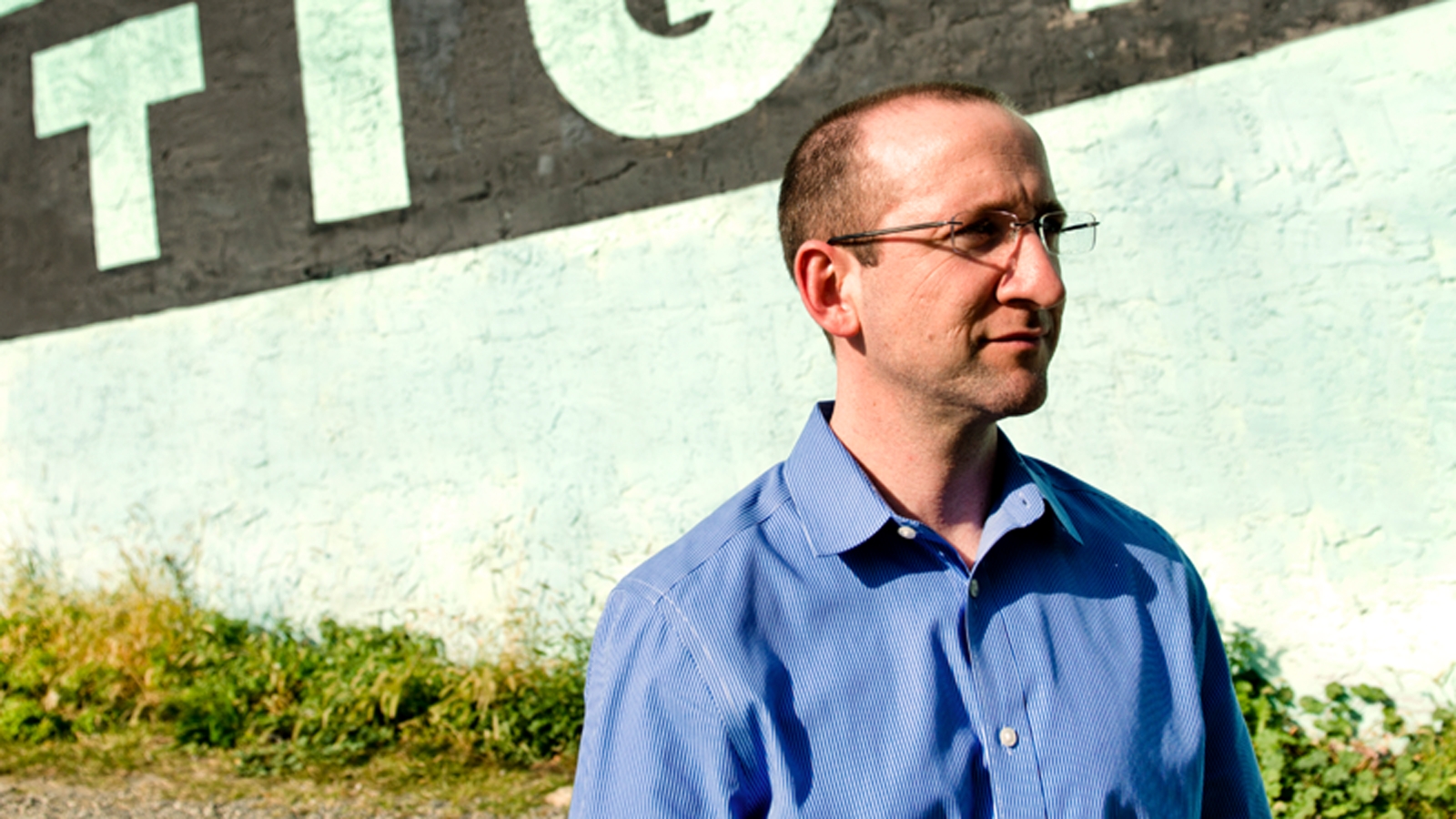To say John MacDonald’s family has an affinity for academia would be putting it lightly. His father and sister are professors of engineering, and his brothers hold advanced degrees in mathematics and physics, so it would be only logical to assume MacDonald would naturally choose scholarship. But it didn’t start out that way.
“These were obviously some big academic shoes to fill,” says MacDonald, Associate Professor of Criminology and Sociology, Chair of the Department of Criminology, and the Director of the Jerry Lee Center of Criminology. “But I never thought of it that way, and my parents never pressured me into getting a Ph.D., even though it was the path my siblings had taken. Originally I wanted to be a lawyer—I wanted to find a way to advocate meaningful policy change, and I think that same thread is what drew me to teaching.”
MacDonald’s path to criminology began at the National Institute of Justice, the research arm of the Justice Department, where he worked while finishing his doctoral degree. What initially seemed like the logical extension of his interest in crime and justice—government service—quickly led to malaise and a feeling of separation from the research he was working to fund. To get his research fix, MacDonald started work for the RAND Corporation, a nonprofit institution that helps improve policy and decision making through research and analysis.
“While I was doing research for RAND I worked mostly in crime and criminal justice-related projects. But I also did some research in public health and national defense. And even though it provided the opportunity for hard research, I realized how much I missed the teaching I did during my doctorate program,” says MacDonald.
When MacDonald transitioned from RAND to Penn in 2006, the Department of Criminology was still in its infancy. One of the main draws was the other talent, and the sense that they were building something together.He arrived alongside trailblazers in the discipline: Professor of Criminology and Statistics Richard Berk; Richard Perry University Professor of Criminology, Psychiatry, and Psychology Adrian Raine, the world’s premier bio-psychologist of crime and violence; and former Penn professor of criminology and sociology Lawrence Sherman. “I was attracted to the Penn program because of its interdisciplinary focus on creating cutting-edge research that informed policy,” says MacDonald. “And the chance to be on this kind of team was truly a once-in-a-lifetime opportunity.”
It was critical to MacDonald that he applied the program’s central idea of evidence-based policy—using research to improve public policy—to his teaching. The first challenge, he says, is communicating the importance of applying criminology to everyday life, given that the field can often seem esoteric to the uninitiated.
MacDonald notes that, like him, up to a third of his students aspire to be prosecutors or defense attorneys. Out of that group there’s another half seeking a career in public service. “Those are the kids that are easy to reach, and it’s great to have them in class, but often it’s the 20 percent that have no idea what criminology is about where I think, well, if I can reach them, then whatever important positions in society they may hold in the future, maybe they’ll remember something about criminal justice and apply that knowledge there.”
MacDonald’s philosophy that research should have an impact on community was recently put to the test when he undertook a project involving a systematic analysis of the effectiveness of the Penn police department, which boasts over 100 full, sworn officers and is the country’s third-largest university police force. “The anecdotal evidence that the force had had a positive effect on deterrence was good, but they were lacking a systematic evaluation.”
MacDonald’s team, which included Professor of Law Jonathan Klick, received data on crime patterns over a six-year period. They charted boundaries surrounding the Penn campus to study the effectiveness of concentrated police coverage. This included a special unit assigned to active criminals involved in car break-ins and robberies. For violent street crime, they determined there was around a 60 percent drop, and for general crime, about a 45 percent reduction. The one exception was theft from buildings, a crime Penn police have identified as needing special attention.
“We made it abundantly clear when we accepted this task that we would be unbiased and forthcoming about the results—however they turned out,” says MacDonald. “But what we saw was pretty convincing evidence of a big reduction in crime within outer University boundaries, evidence that you couldn’t explain by any other clear method.”
MacDonald says one of the reasons the Penn police force has succeeded where city police forces haven’t is the employment of place-based tactics. “Penn police are very effective at focusing in on specific problem areas. If it’s a rash of burglaries or robberies, they’ll put police there, camp down for a while and try to catch people in the act, prevent it from becoming a cycle. The greater Philadelphia force is trying to do that more, but it is harder when you have an entire city with big swaths of poverty and crime.”
“Often it’s the 20 percent [of students] that has no idea what criminology is about where I think, well, if I can reach them, then whatever important positions in society they may hold in the future, maybe they’ll remember something about criminal justice and apply that knowledge there.”
MacDonald recently published an article related to this work in one of the premiere scholarly journals in the field, Law & Society Review. He also plans to use the knowledge gleaned from the Penn police study and others to author a book on place-based approaches to reducing crime and improving health. Using insights from criminology, as well as the public health sphere, the goal is to show how public policymakers can harness the role of location in designing policies for everything from public transit to sidewalks to cleaning up vacant lots, so that crime can be reduced and health outcomes improved by encouraging people to walk and actually feel safe.
It’s not the first time MacDonald has worked with the police. He has dedicated much of his career to studying racial and ethnic disparities in criminal justice, and accusations of racial bias are often directed toward arresting officers. To this end, MacDonald helped create an internal benchmarking program designed to help police identify problematic officers with a history of bias. Developing this model has also led to other projects using similar approaches to create comparison groups to study the effects of zoning changes on crime, as well as residents’ perceptions of racial discrimination by their local police.
But issues of bias on the street often begin with policymaking, MacDonald says, and for this reason, criminologists are often required to pick through local legislature in order to determine how it is affecting the well-being of minority groups. He cites a policy in California he examined that was designed to reduce the use of prison for drug offenders. “Most people don’t go to prison for their first drug offense,” MacDonald says. “They typically have a prior violent conviction of some kind. So when California enacts this policy to try to positively impact incarceration rates, they automatically exclude inmates with prior records. What this means is that a law targeted to help a certain group of offenders is actually working against them.”
The notion that criminology can influence public health and social justice was first championed at Penn by Thorsten Sellin, who taught the University’s first criminology course in the 1920s and is credited with furthering the idea of approaching criminology with scientific evidence. “Sellin was responsible for shaping criminology by emphasizing the need for rigorous empirical research. This was the grandfather of criminology at the University, a guy we all looked to,” says MacDonald. “But he also never lost sight of the big picture. Social justice was always one of his primary concerns. He was a big opponent of the death penalty because he viewed it as racially biased in its practice, a contentious view given the time period.”
Sellin’s legacy remains strong at Penn. The Jerry Lee Center of Criminology is dedicated to facilitating research projects and events around efforts to prevent crime. It houses several research grants and contracts that involve working with state, local, and federal agencies on topics including community-based corrections, probation and parole monitoring, and reducing youth violence. The center also hosts guest speakers and events promoting evidence-based approaches to criminal justice policy in the U.S. and abroad. Recent events have included a group of scholars from Latin America working on efforts to use evidence to inform criminal justice policy, and a program promoting knowledge learned from field experiments in Philadelphia on different aspects of crime prevention and justice.
“Criminology’s potential to affect social change is largely due to its weaving together multiple disciplines: the sociological tradition, the psychological tradition, and the economic tradition,” says MacDonald, who last year won the Association of Public Policy and Management’s David N. Kershaw Award, one of the highest honors in recognition of work related to public policy and social science. “Many of the criminologists that came out of the 1960s trained specifically in sociology. So when I walk into a classroom today, to teach a bunch of fresh faces criminological theory, it’s important that I honor this legacy, and present the material in a way that will encourage them to get out there and make a difference.”





